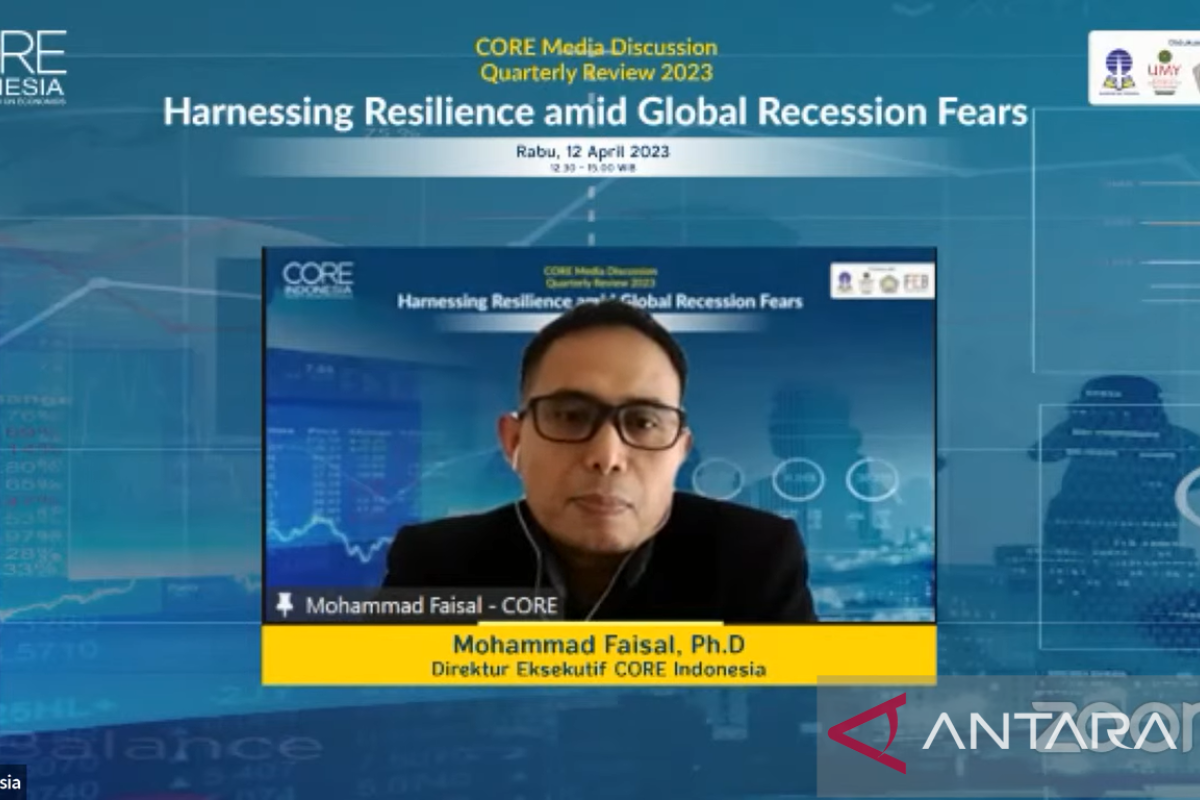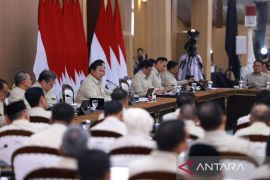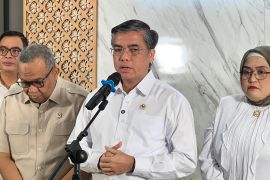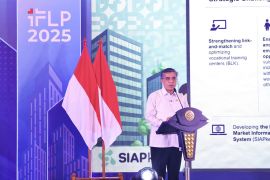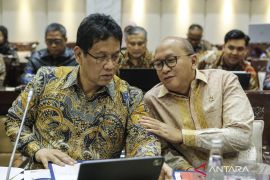…economic growth will be below 5 percent—at 4.7 to 4.9 percent to be exact. Meanwhile, for the full year in 2023, it will be at 4.5 to 5.0 percent.Jakarta (ANTARA) - Executive Director of the Center of Reform on Economics (CORE) Indonesia Mohammad Faisal has predicted that Indonesia's economy will record less than five percent growth in the first quarter of 2023.
"We are predicting that in the first quarter of 2023, economic growth will be below five percent—at 4.7 to 4.9 percent to be exact. Meanwhile, for the full year in 2023, it will be at 4.5 to 5.0 percent," he said at the CORE Indonesia Quarterly Review discussion, which was followed online from here on Wednesday.
According to him, the projected growth will be supported by household consumption and investment. Household consumption is estimated to still account for half of the economic growth, while investment is projected to contribute more to economic growth this year.
Meanwhile, the contribution of net exports is expected to be slightly smaller compared to last year, but it is likely to remain around 20 percent. The contribution of government consumption to growth will be the smallest, he said.
Government consumption is estimated to have the potential to experience a contraction but not as deep as in 2022. This is inseparable from the normalization of the government's fiscal and monetary policies, he added.
Faisal further said that investment in 2023 will be more resilient against global pressures and will even tend to get more robust.
Several factors are likely to encourage investment: people’s consumption, business expansion, the domestic market, which is still doing better than the global market, the strengthening of investment credit, and mineral and coal downstreaming.
Some other factors will be capital expenditure of the state budget (APBN), improvement in the construction of downstreaming facilities, and improvement in capital expenditure.
In 2022, investment in the manufacturing sector grew by 53 percent, and one of the supporting factors was the mineral and coal downstreaming policy that continued to be implemented by the government, not only for nickel but also other commodities.
"This downstreaming encouraged an improvement in investment. Thus, if we look at it based on the sector, we look at the primary sector, mining has the highest investment growth. The base metal industry is the processing industry of mining commodities; this also has the highest investment growth in the secondary sector," he pointed out.
Related news: Contribution of trade to economic growth significant: Deputy Minister
Related news: Indonesia's economic growth to remain strong in 2023: BI
Translator: Martha Herlinawati, Raka Adji
Editor: Rahmad Nasution
Copyright © ANTARA 2023
